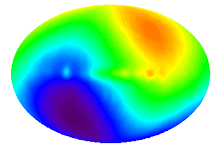HUMAN SUPERORGANISM
Human beings can be considered as “superorganisms” as a result of their close symbiotic associations with the gut microbiota. Superorganism metabolism involves integration of truly indigenous metabolic processes (coded in the host genome) with those of the microbiome. This results in extensive transgenomic cometabolism of many substrates including those involved in host metabolic regulation. The superorganism concept represents an important paradigm shift in understanding human biology and is likely to have a significant impact on the future of disease prevention and therapy. Recent works have shown that the exact human microbiome composition varies between healthy people and also between lean and obese individuals, and further, that the microbiome composition is responsive to dietary modulation for weight reduction. “Top-down”systems biology analysis of metabolic profiles of human baby microbiota and normal microbiota associated mice revealed that absorption, storage, and metabolism of dietary lipids were specifically modulated by the microbiome. Moreover, the induction of type 2 diabetes and obesity with a high-fat diet in rats has been shown to correlate with the predose metabolic patterns associated with differences in gut bacterial activities, indicating the importance of the microbiome in host predisposition to diseases. Recent work showed that gut microbiome was probably responsible in part for the systemic response to Schistosoma mansoni infection in mice. Disruptions of choline metabolism caused by changes in symbiotic gut microbiota may play an active role in the development of insulin resistance and nonalcoholic fatty liver disease in high-fat diet experiments with a mouse strain genetically predisposed to these disease traits (. Responses of individual animals and humans to drug treatments can also be strongly influenced by gut microbiome composition, because the microbiome provides not only complementary metabolic pathways for drugs, but is also a source of pharmacologically active secondary metabolites that can activate mammalian liver enzyme systems. The importance of gut microbiota to host metabolism may best be illustrated by the fact that genetically homogeneous animals can have diverse metabolic phenotypes when they have structurally different gut microbiota. It has also been shown that identical twins still had significant differences in their gut microbiota although they shared much higher similarity for gut microbiota structures than genetically unrelated married couples. The unique combination of gut bacteria in each animal may thus have an important role in their host's metabolism because they are adding new dimensions to functional diversity at the whole-organism level on host genetics, which includes participating the development of pathophysiology and providing complimentary metabolic pathways for drugs and diets. In light of the recent findings on the relationships between gut bacterial composition and the obese host phenotype, understanding gut bacterial dynamics in relation to host physiology and pathology has become an important part of future personalized health care solutions.
skip to main |
skip to sidebar
網誌存檔
-
▼
2012
(31)
-
▼
4月
(31)
- Gut-Liver Axis and Sensing Microbes
- The Microbes of the Intestine An Introduction to T...
- Effect of Interactions of Bacteria, Viruses, and E...
- Human gut microbiome: the second genome of human body
- Microbiota immune system interaction: an uneasy al...
- Metagenomics: Key to Human Gut Microbiota
- MICROBIOTA:THE FOGORTTEN ORGAN
- Gut Microbiota and Its Pathophysiology in Disease ...
- GUT MICROBIOTA
- The gut microbiota as an environmental factor that...
- Human gut microbiome: the second genome of human body
- Microbiota immune system interaction: an uneasy al...
- Whole body systems approaches for gut microbiota t...
- HUMAN SUPERORGANISM
- Infection Control in the Multidrug-Resistant Era: ...
- The gut's 'friendly' viruses revealed
- Ecological and evolutionary forces shaping microbi...
- 功能元基因组学与中药研究国际研讨会
- 不適當不合理的過度的抗生素使用,將殺害對我們人體有益的細菌。抗生素使用考慮的除了聚焦在細菌抗藥性之外...
- 停止殺害對我們人體有益的細菌
- 人類腸道中的微生物體,提供了豐碩的有關健康和疾病的信息。它們訴說了人體內在的運轉運作的故事。
- 人類腸道微生物體,具有消化、生物降解、生物聚合、生物轉化、解毒作用、防衛功能、促進生長成長發展發育成...
- 人類超級生物體和人類微生物體
- 這個廣泛的微生物基因體參與了食物、藥物和其他有毒性的化合物的,初次通過的新陳代謝和生物可利用性的生物...
- 這個人類超級生物體,包括了兩套基因體,一個完整的人類基因體和數目巨大的微生物基因體。這兩套基因體一定...
- 人類腸道的微生物體能夠控制器官的功能。
- 人類腸道微生物體,是一個最緻密的、最複雜的、最生物多樣性的、動態的生態體系。生態的和演化的力量形塑人...
- 人類腸道微生物體,包含了大約一百兆個微生物,它的數目是人類身體所有細胞數目的十倍,這個人類腸道微生物...
- 人類腸道微生物體和人類超級生物體
- 人類腸道微生物體和人類超級生物體
- 人類生態系統是非常重要的,它決定甚麼是我們能做的和甚麼是我們能吃的。
-
▼
4月
(31)

沒有留言:
張貼留言